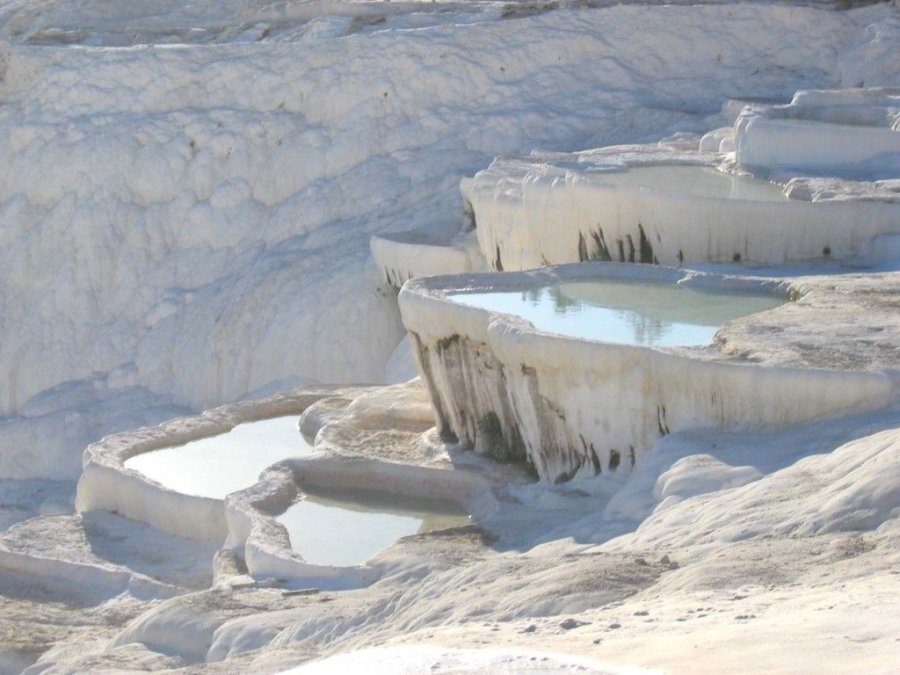Imagine a natural spa that has been frequented since the 2nd century BC. The people from the ancient city of Hierapolis regarded it as a thermal spa, with their esteemed patronage akin to the modern-day VVIPs enjoying the luxurious hot springs with balmy waters flowing gracefully in waves over waves of smooth white terraces at the top of a cliff. The cliff itself looks like it’s made of frosting on a cake, frozen in concentric-looking circles.
From afar, you feel like you are nearing a white foam castle. Yes, Pamukkale means cotton castle, and it’s not hard to see why. But don’t fall for the delusion. The foamy stuff is calcium carbonate precipitated from the spring water as it flows over, initially gelatin-like in formation but eventually hardening. The terraces that have a cascading appearance are indeed made up of the travertine deposited by the mineral springs. The stark contrast of the sheer white with the surrounding uplands further enhances the image.

Pamukkale is located in the Denizli province in South-West Turkey. You may walk in the pools but are not allowed to wear shoes for fear of damaging the structures. However, only small pools may be used, and instead of walking on the terraces, you can tread on the pathway that leads up the cliff. I wouldn’t protest. The whole structure looks so frail and delicately beautiful that it would be a pity to ruin it for future generations. The area has been designated as a UNESCO World Heritage Site.
A one-day bus tour can take you to Pamukkale to and from Fethiye and Selcuk/Kusadasi, which saves you the hassle of changing several buses to reach this point. The complete one-day tour costs €65, and you can also visit the nearby ancient city of Hierapolis to taste the ancient Roman Empire. Here, there is an archaeological museum preserving the remnants of these civilizations. Still, you can stroll around the town and see the coffins in the cemetery, the great baths, a shrine dedicated to nymphs, and much more that resonates with Hellenistic culture and belief system. There is also the option of starting this tour with an overnight bus from Cappadocia.
The area has long attracted tourists, some for the sheer beauty and others for the therapeutic powers the waters are supposed to possess. The area was periodically improved for visits by the Imperials, even in ancient times. Many claim that the appearance is unique to Pamukkale only, and I have no trouble believing this. The structure resembles the balconies of a white castle, one atop the other. The town of Pamukkale is located at the base of the hot springs. You may see limestone cliffs forming stalactites and water rivulets reflecting the sunlight dazzlingly.
I think that’s enough to say about the subject. Beauty is to be witnessed, not penned down in mere words. So, while you are in Turkey, visit this ethereal site that the people of Hierapolis could only regard with awe and reverence.
